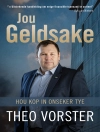A fresh approach to managing risk in the most challenging market conditions
Strategic Risk Management presents an innovative approach to portfolio design. Often the risk management function is a series of tripwires that are activated after the portfolio is already in trouble. Strategic Risk Management presents a framework that seeks to integrate the initial portfolio design and the risk management function. Much of the book’s research was conducted pre-COVID-19; the market selloff in March 2020 offers a unique out of sample experiment that provides evidence supportive of the approach.
A crucial ingredient in this integrative design is to understand the performance of various investment strategies in stressful market conditions. The book begins by measuring the performance of various assets and strategies that purport to provide hedging abilities: such as put options and long gold positions. While put options are an extremely reliable, few would want to give up 700 basis points a year to buy this type of insurance. And even if gold does not have the type of drag that long options strategies do, gold turns out to be an unreliable hedge.
We focus on two investments that historically offer impressive protection in adverse events: trend following strategies and quality-based equity strategies. We show that performance of trend following strategies is naturally linked to the payoff of a long call and long put position. This property is particularly useful in mitigating portfolio drawdowns.
The book also considers operational strategies such as portfolio rebalancing. Most investors routinely rebalance their portfolios, for example, to a 60/40 equity/bond mix. However, few investors realize that a mechanical rebalancing strategy increases drawdowns and portfolio risk. The reason is simple. In extended equity sell offs, the rebalancing strategy is to buy, which increases drawdowns. Strategic Risk Management offers an intuitive solution. If the trend following signal suggests that the drawdown will continue, delay the rebalancing. We call this strategic rebalancing.
The book contains various other insights, including analyzing the impact of a portfolio strategy that targets a certain risk level. This technique reduces allocations to the riskiest assets when volatility spikes. Given that surges in volatility are usually associated with plunging markets, this strategy also reduces drawdowns.
The reader of this book will:
* Learn how to incorporate risk management into the core portfolio design, rather than treating it as an afterthought;
* Gain a deeper understanding of concepts such as portfolio rebalancing;
* Acquire tools to achieve a more balanced return stream through volatility targeting of higher-risk asset classes;
* Obtain an overview of various defensive strategies, and learn which strategies offer the most reliable and affordable protection;
* Be equipped with a set of rules that allows for the early detection of strategies or managers that have faded.
Strategic Risk Management is a thought-provoking resource for developing your portfolio design and risk management skills.
Table des matières
Foreword by Martin Leibowitz
Preface by Sandy Rattray
Chapter 1: Seeking Crisis Alpha
Chapter 2: Can Portfolios Be Crisis Proofed?
Chapter 3: Risk Management via Volatility Targeting
Chapter 4: Strategic Rebalancing
Chapter 5: Drawdown Control
Chapter 6: Man versus Machine
Chapter 7: Out-of-Sample Evidence from the COVID-19 Equity Sellof
Notes
Index
A propos de l’auteur
CAMPBELL R. HARVEY is Distinguished Professor of Finance at Duke University and a Research Associate at the National Bureau of Economic Research. He has been an investment strategy advisor to Man Group for fourteen years. His research focus is on risk management in dynamic settings.
SANDY RATTRAY is Chief Investment Officer of Man Group and a member of the Man Group Executive Committee. He previously spent fifteen years at Goldman Sachs where he was Managing Director in charge of the Fundamental Strategy Group.
OTTO VAN HEMERT is the Director of Core Strategies at Man AHL and a member of the Man AHL Management Committee. He has twelve years of experience running systematic trading strategies. Before that he was on the Finance faculty of NYU Stern.












